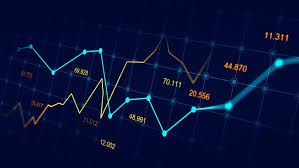
Automatic Forex Trading: Revolutionizing the Currency Market
In the fast-paced world of currency trading, time is of the essence. Traders are constantly looking for ways to gain an edge in an increasingly complex market. One of the most significant advancements in this domain has been the emergence of automatic forex trading latam-webtrading.com. This technology has not only transformed how trading is executed but also opened up new opportunities for traders at all levels. In this article, we will delve into automatic forex trading, its advantages, potential risks, and the strategies that can enhance your success in this exciting market.
Understanding Automatic Forex Trading
Automatic forex trading, also known as algorithmic trading or automated trading, involves using software programs to execute trades on behalf of the trader. These programs, often called trading bots, analyze market data, identify trading opportunities, and place trades automatically, without human intervention. This approach can significantly streamline the trading process, allowing traders to focus on strategy rather than execution.
The Benefits of Automatic Forex Trading
The advantages of automatic forex trading are numerous. Some of the most significant benefits include:
- Speed and Efficiency: Automated trading systems can analyze vast amounts of data and execute trades in milliseconds, enabling traders to capitalize on fleeting market opportunities.
- Emotion-Free Trading: One of the biggest challenges traders face is managing emotions during trades. Automated systems operate on predefined rules, eliminating emotional biases that can lead to poor decision-making.
- 24/7 Trading: The forex market operates 24 hours a day, and automated trading systems can monitor the market continuously. This means traders can take advantage of movements in the market even when they are not actively monitoring their accounts.
- Backtesting Capabilities: Traders can test their strategies on historical data to see how they would have performed in the past. This feature helps refine strategies and improve their effectiveness before deploying them in live trading.
- Diversification: Automated trading allows traders to manage multiple accounts and strategies simultaneously, which can help spread risk and enhance overall portfolio performance.
Potential Risks and Challenges
While automatic forex trading can offer numerous benefits, it is not without its risks and challenges. Some considerations include:
- Technical Issues: Automated systems depend heavily on technology, and any technical failure—such as connectivity issues or software bugs—can result in significant losses.
- Market Conditions: Automated strategies may not perform well under all market conditions. High volatility or unprecedented market events can lead to unexpected losses if the system fails to adapt.
- Over-Optimization: Traders can fall into the trap of over-optimizing their strategies based on historical data, which may not always yield the same results in live conditions.
- Dependency on Technology: Relying solely on automated systems can lead to a lack of understanding of market dynamics. Traders should still maintain a level of market awareness.
Developing an Automatic Trading Strategy
Creating a successful automatic trading strategy involves careful planning and testing. Here are some steps to consider when developing your trading algorithms:
1. Define Your Trading Goals
Before you begin programming your trading robot, you must clearly understand your trading objectives. Are you looking for long-term growth, or are you aiming to make quick profits from short-term trades? Your goals will shape your strategy.

2. Choose a Trading Strategy
There are various trading strategies you can implement in your automatic trading system, including trend following, mean reversion, and breakout strategies. Select a strategy that aligns with your trading goals and risk tolerance.
3. Backtest Your System
Once you have developed your trading strategy, it is crucial to backtest it against historical data. This process allows you to evaluate the effectiveness of your strategy in different market conditions and make the necessary adjustments before trading live.
4. Risk Management
Effective risk management is vital in the forex market. Ensure your automated system incorporates risk management techniques, such as stop-loss orders and position sizing, to protect your capital.
5. Continuous Monitoring and Adjustment
Even though automatic trading systems operate independently, they still require oversight. Monitor your system’s performance regularly and be prepared to make adjustments as market conditions change.
Choosing an Automated Trading Platform
Selecting the right automated trading platform is crucial for your trading success. Consider the following factors when evaluating different platforms:
- User Interface: A user-friendly interface can make it easier to set up and manage your automated trading system.
- Available Tools and Features: Look for platforms that offer robust backtesting, charting tools, and customization options to create and optimize your trading algorithms.
- Broker Integration: Ensure that the platform integrates with a broker that caters to your trading needs and offers competitive spreads and commissions.
- Support and Community: Consider platforms with good customer support and active trading communities where you can seek advice and share experiences.
Conclusion
Automatic forex trading presents remarkable opportunities for both new and experienced traders. With the potential to enhance efficiency, reduce emotional trading, and diversify strategies, it is no surprise that many traders are turning to this innovative approach. However, as with any trading method, it is essential to understand the risks involved and to develop a well-thought-out trading strategy. By leveraging the strengths of automatic trading while remaining vigilant of the challenges, you can position yourself for success in the dynamic world of forex trading. Embrace the future of trading, and you may find yourself unlocking new levels of profitability and efficiency.
